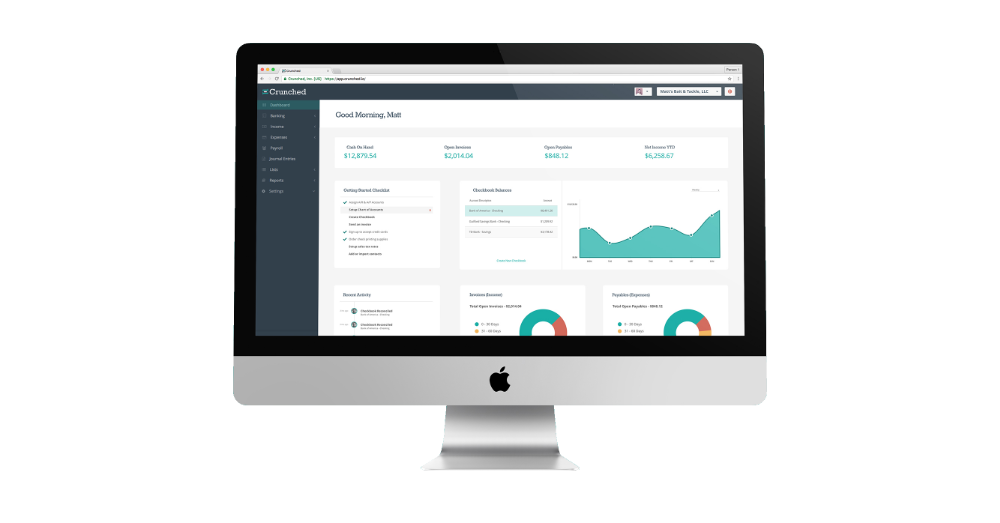Understanding Estimated Taxes
By Matt Reims
For full-time employees working for a company, your employer automatically deducts taxes from your paycheck every time you get paid. At the end of the year, you receive a W-2 form, fill out your return, and — based on your deductions, dependents, etc. — you receive a refund check or pay out the money you owe. When you’re a small business owner, taxes require more consideration. It’s up to you now to make sure that you pay the correct amount of taxes within the appropriate timeframes. As a self-employed worker, you may need to pay estimated taxes on a quarterly basis.
If you’re not experienced in paying estimated taxes, it may appear a bit overwhelming, especially if it’s your first time doing so. If you’re unsure about how to pay, how much to pay, or when to pay estimated taxes, this tutorial will help.
Do I have to pay estimated taxes?
The answer depends on a few factors. First, how much do you anticipate your tax liability will be for the year? If it’s more than $1,000, the Internal Revenue Service (IRS) expects you to make estimated tax payments.
Generally, self-employed workers, freelancers, and sole proprietor business owners are required to make estimated tax payments quarterly. Corporations, S Corp shareholders, and business partners also typically fall into the “estimated taxes” category.
If you owed taxes in the previous year, it’s a sign that not enough money was withdrawn or you acquired additional money that elevated your tax liability.
How do I figure out how much to pay in estimated taxes?
The percentage of your income that needs to be designated for tax payment will come down to your income tax bracket. The key thing to remember here is that there’s not one set percentage that applies to all individuals. It’s a tiered system, meaning that the higher your income, the higher the percentage is that you owe. To get a handle on tax rates for taxable income brackets, visit Nerd Wallet. The numbers can range from 10 to 39 percent, depending on your income.
The process of calculating your estimated tax obligations starts by estimating your anticipated adjusted gross income, your deductions, and any credits you may have received during the year. While you will want to calculate all of those figures exactly, you can use last year’s income figures as a guide.
After you have these numbers tallied, you’ll have to make a few calculations, and then you’ll have your estimated tax total. Check out the worksheet included with the Form 1040-ES that goes over each of these calculations thoroughly.
When are my estimated taxes due?
Regular employees have until April 15 (generally, depending on the year) to file their taxes. As a small business owner, however, you’ll most likely be looking at four separate tax due dates. State estimated tax due dates may vary, so check with your state. Federal tax due dates are typically as follows, but could be effected by a weekend so double-check year to year.
Quarter 1) January 1 through March 31 — Taxes due April 15 (it was April 18 in 2017)
Quarter 2) April 1 through May 31 — Taxes due June 15
Quarter 3) June 1 through August 31 — Taxes due September 15
Quarter 4) September 1 through December 31 — January 15 of the following year
How do I pay my estimated taxes?
The IRS offers multiple ways to pay. You can simply write a check and mail it to the IRS, along with your Form 1040-ES, or pay directly through your bank account via an electronic funds withdraw or a same-day wire.
If you have a large payment to submit, consider the IRS’s Electronic Federal Tax Payment System (enrollment required).
Am I required to pay sales tax too?
If your business operates in a “sales tax state” and you provide a taxable service or sell a taxable product, then yes, you’ll have to pay sales tax and file them periodically. How often you must pay will depend on your state; for high sales volume businesses, the frequency could be monthly, but expect to have to file and pay your sales tax bill quarterly.
Filing estimated taxes quarterly is not the most exciting part of running a small business, but managing this process is critical to avoiding fees and getting behind on your tax obligations. To help make the payment process easier, you might consider investing in cloud accounting software to assist the bookkeeping process. Accounting software will help you keep track of your income, expenses, and deductions throughout the year, and make it easier for you to calculate your estimated taxes each quarter.


